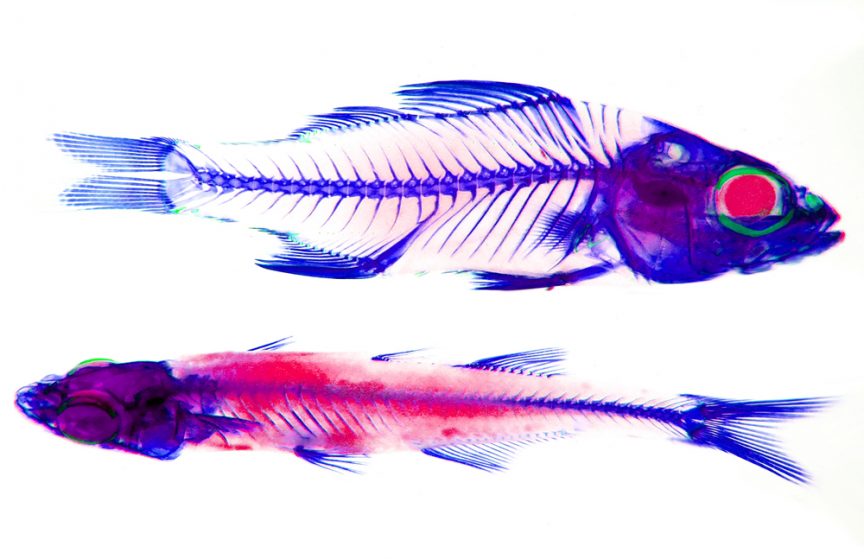Name: Noah Bressman
Which came first in your life, the science or the art?
Definitely the science. I’ve always wanted to be a fish biologist, while the only art I would do growing up was the occasional fish doodle. I got into the art because when I moved for grad school my walls were empty and boring. To change that, I went to an art gallery and found out that art was expensive. I couldn’t afford enough to decorate my walls as a grad student. However, some of the research techniques that I use produced very colorful, pretty images, so I decided to print them out and hang them on my walls. Friends saw the prints on my walls and wanted to by some for themselves and said I should put them up in galleries. So I did and that’s how I became an artist.
“The only art I would do growing up was the occasional fish doodle. I got into the art because when I moved for grad school my walls were empty and boring.”
Noah Bressman

Which sciences relate to your art practice?
Functional morphology and microscopy. The techniques I use to achieve my foundation colours for my pieces—clearing and staining—are common techniques in my field for studying the skeletons of small animals. Clearing and staining involves a series of chemicals that stain certain tissues certain colors, like cartilage blue and bone red, while digesting away other tissues. Because the bones and cartilage become brightly colored and everything else disappears, it becomes really easy to study the skeleton with these techniques, but also produces beautiful anatomical images.
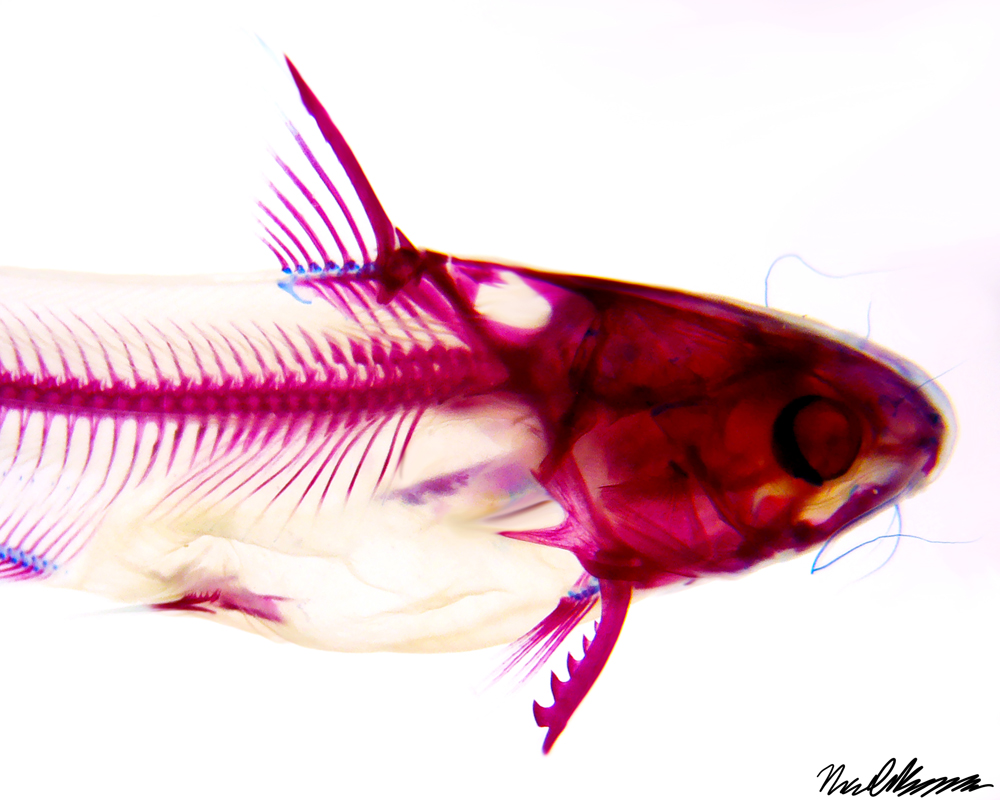
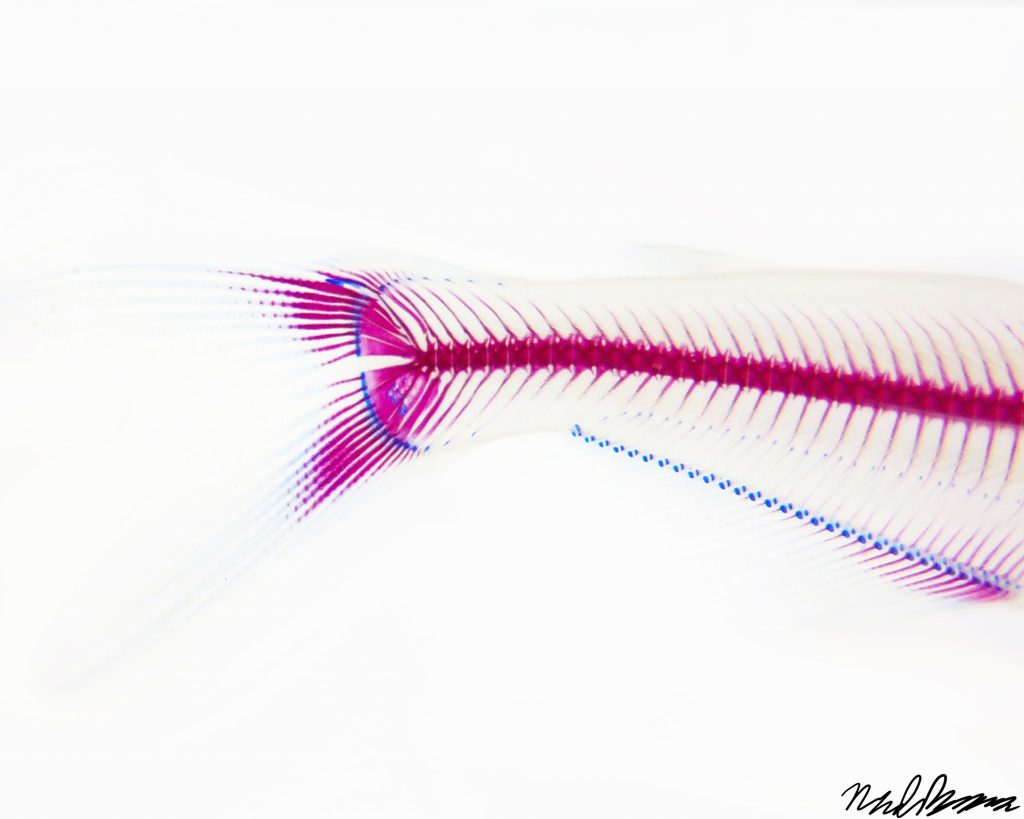
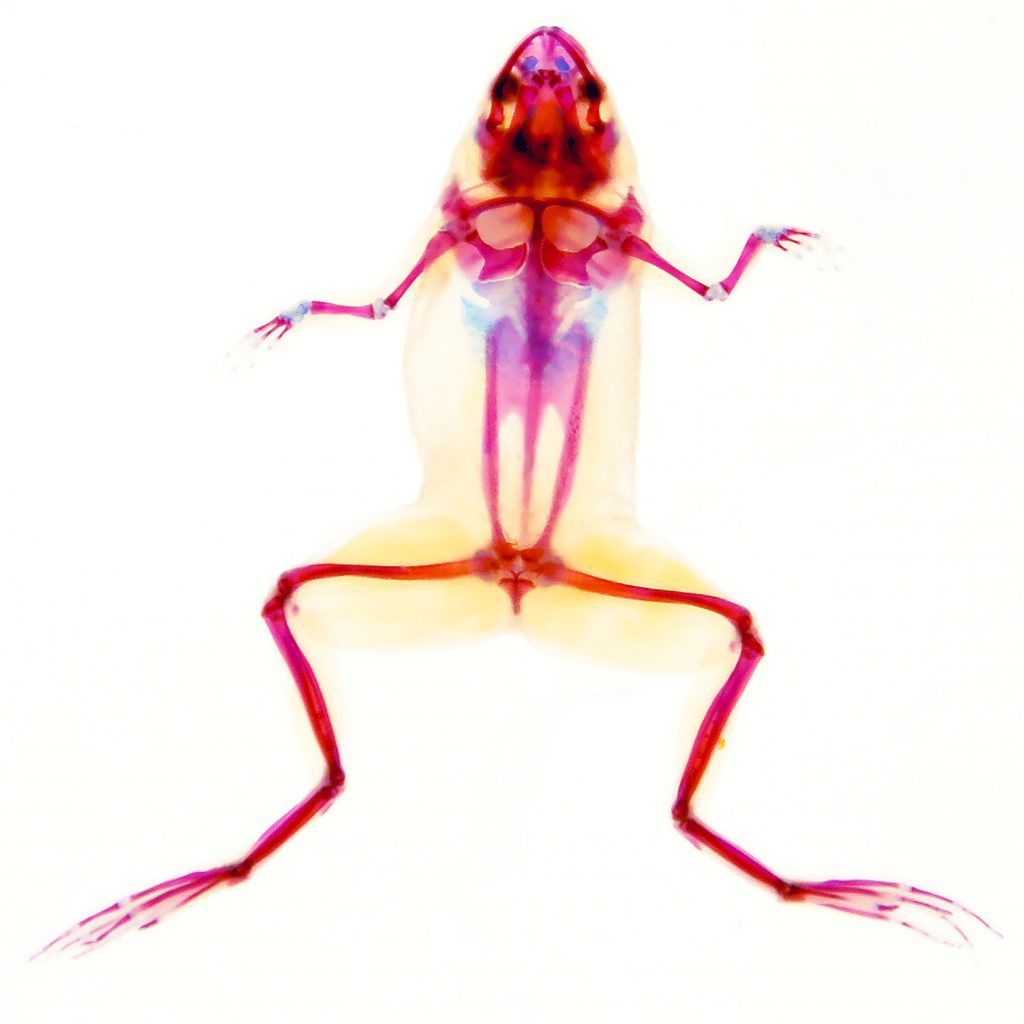
What materials do you use to create your artworks?
I make biological art. As such, I need biology, AKA actual animals. I start with small vertebrates—usually fish or amphibians that I either catch while fishing or perform research on, or that died naturally in somebody’s home fish tank. I then treat them with a variety of biological tissue stains and other chemicals. Then, I photograph these animals on a makeshift light table. Because I don’t have a fancy camera, I rely on post-editing a lot to clean up my images and create cool effects that make my work standout from others doing similar types of art. Once I Photoshop my images to my liking, I print them out on photopaper or canvas, although I am working on a really cool piece where I will try printing on aluminum for the first time.
Artwork/Exhibition you are most proud of:
The piece that I am most proud of is actually one of the first ones I made: Icelinus warholus. It features the the same image of a northern sculpin (Icelinus borealis) in four panels of different colors. I thought it looked so good that I have it on four giant canvas panels in my living room! Also, it made the cover of the journal Zoology when I published a manuscript on sculpins, which was really exciting to see! Variations of this piece are probably my most popular prints.
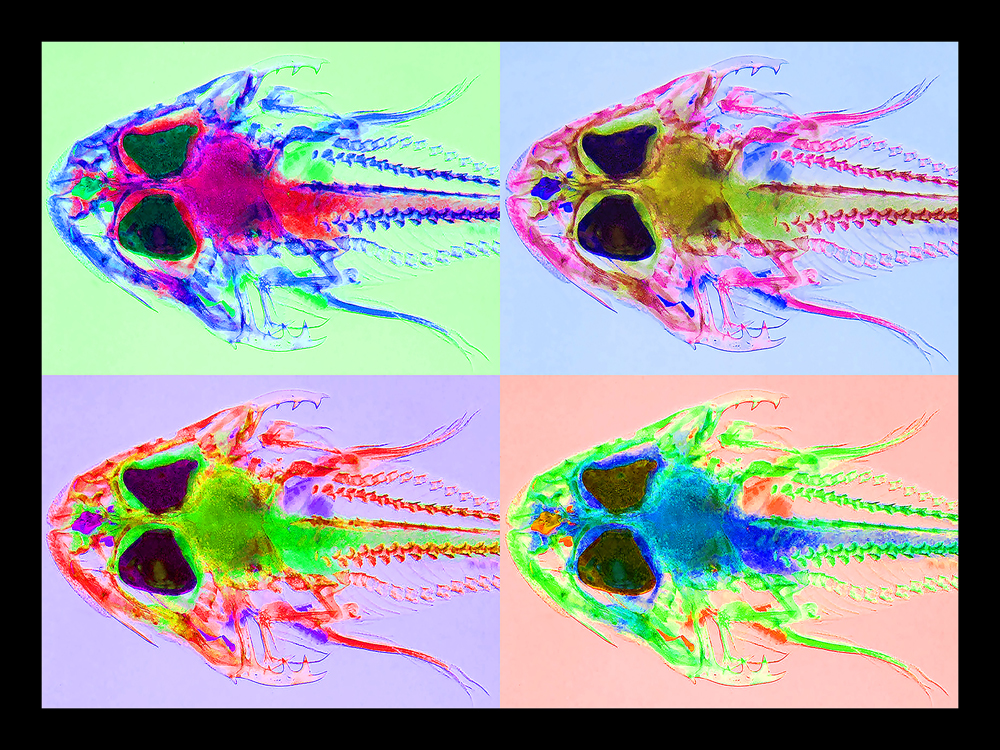
The exhibit that I’m most proud of is probably the one I currently have up at a local restaurant called Vin205. After I printed my first prints at Kinko’s (now called FedEx), I decided to get lunch across that street at that restaurant for the first time. I noticed they were taking down some of the artwork from the walls, and I asked if they put up local art. They said they did, and they actually needed another artist to display in the restaurant. On a whim, I went to my car and brought out a print (of Icelinus warholus) to show them. They loved it. (I later found out that one owner is an underwater photographer and the other an avid fisherman, so they were biased toward fish.) I’ve been displaying my artwork there for about 3 years now. It put me out of my comfort zone, but that exhibit showed me that more than just my friends and family were interested in my art, and inspired me to start sharing it with a wider audience.
“It put me out of my comfort zone, but that exhibit showed me that more than just my friends and family were interested in my art, and inspired me to start sharing it with a wider audience.”
Noah Bressman
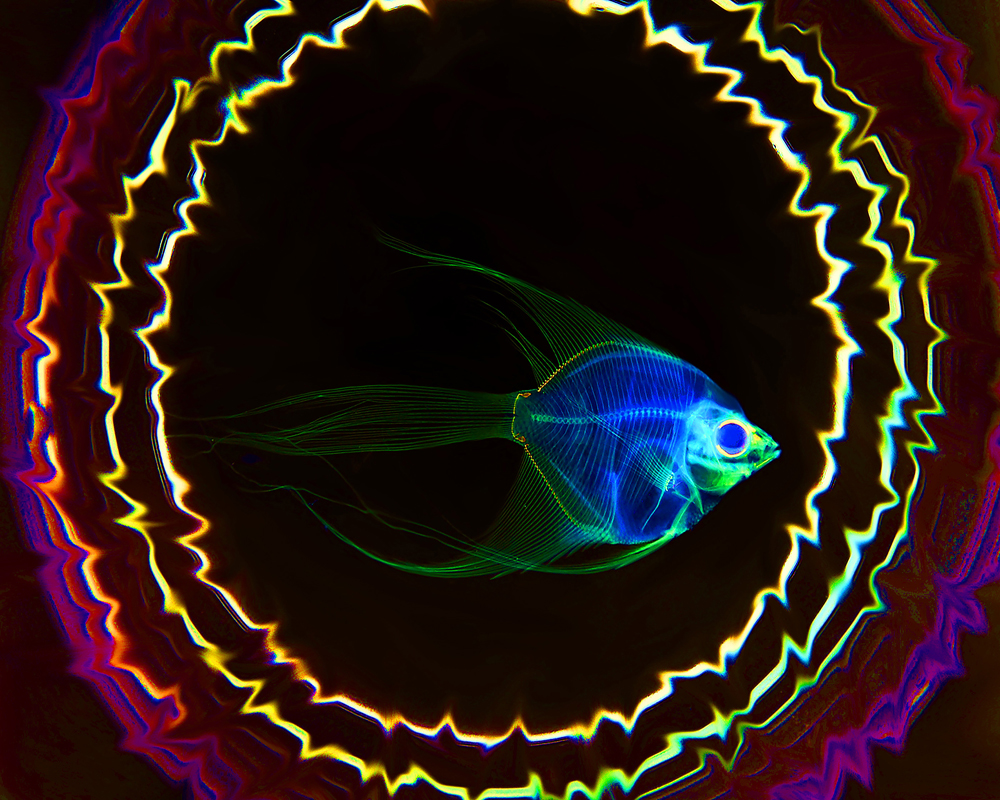

Which scientists and/or artists inspire and/or have influenced you?
Dr. Adam Summers is a fish biologist at the University of Washington who became renowned for creating beautiful images of fish using clearing and staining. He actually taught me that research technique, and inspired me to make my own cleared and stained images to decorate my walls. Originally, my images were a little sloppy. I didn’t have as much practice as Dr. Summers, nor did I have as nice of a camera and a photography set-up. However, that encouraged me to use digital techniques to modify and improve my images in my own unique way, carving my own path.
People also say my work has an Andy Warhol element to it. I don’t directly take inspiration from his work, but some of my multi-panel images have a similar multi-colour, repeating image theme as Warhol. Whether his work subconsciously affects mine or I just choose the multi-panel, multi-colour images because I can’t decide which colours I like best is anyone’s guess.
“Whether [Warhol’s] work subconsciously affects mine or I just choose the multi-panel, multi-colour images because I can’t decide which colours I like best is anyone’s guess.”
Noah Bressman
To find out more about Noah Bressman’s work, visit his website, Twitter, or Instagram, or shoot him an email at [email protected].
Share this Post

